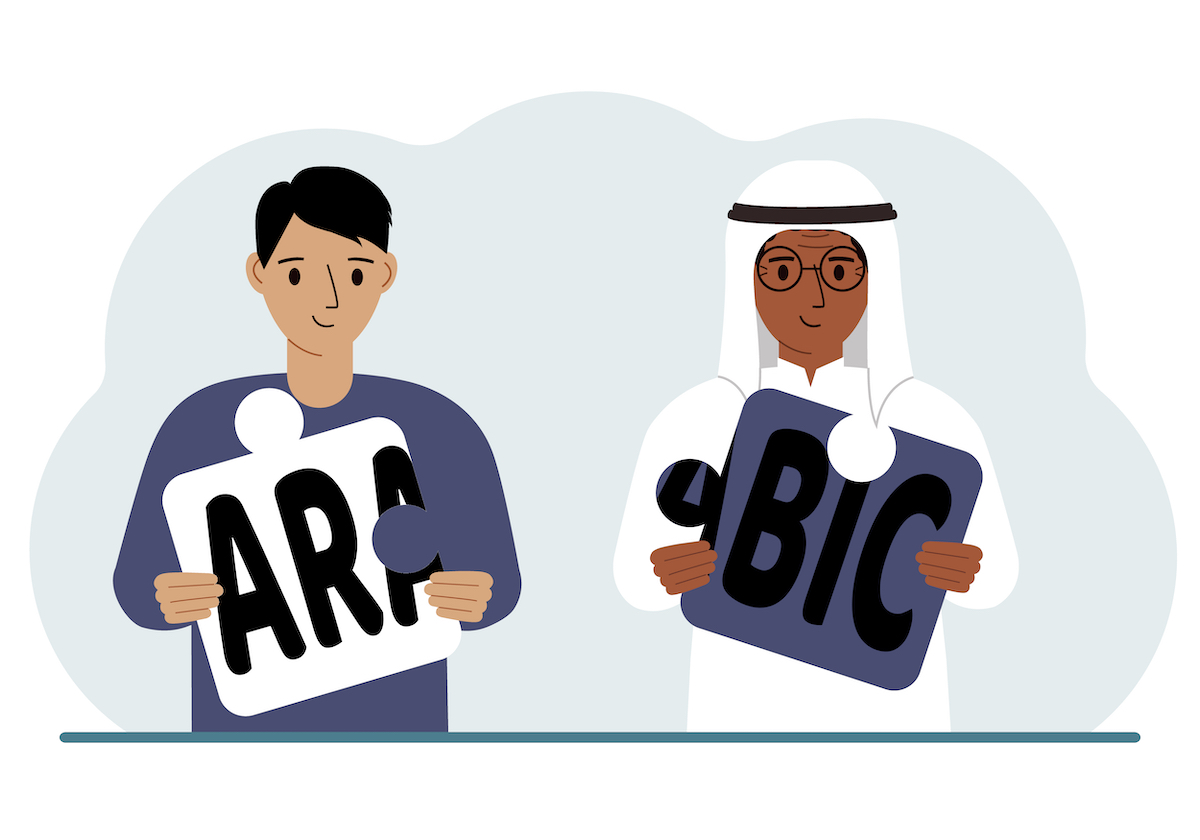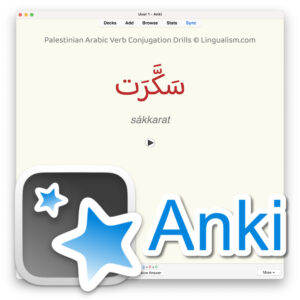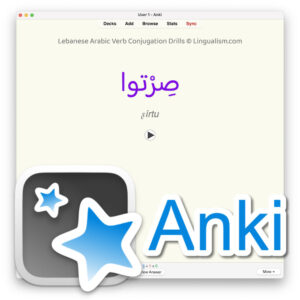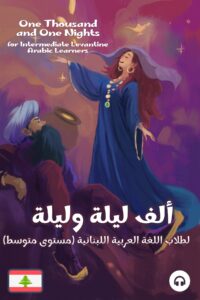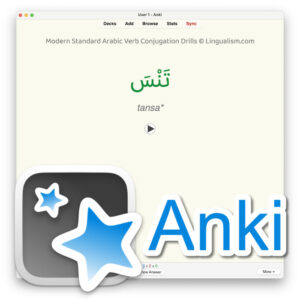Table of Contents
Embarking on the journey of learning Arabic promises a wealth of opportunities to challenge oneself and reap the rewards of mastering a historically and culturally rich language. From its impact on a global scale to its diverse dialects steeped in cultural significance, Arabic is a language that commands attention.
This article aims to unravel the mysteries of the relationship between Arabic dialects Modern Standard Arabic and provide a guide for both new and advanced learners. We’ll delve into the history and evolution of Modern Standard Arabic, exploring its usage and significance in today’s society. With a focus on broadening understanding, this post promises to deepen one’s appreciation of this intricate and beguiling language.
Modern Standard Arabic
The Arabic language has been standardized in the form of Modern Standard Arabic, also known as MSA, serving as a common mode of written communication and formal speech throughout the Arab world.
MSA finds use in an array of contexts, from scholarly works to news broadcasts, as it is engineered to be an understandable form of the language that transcends local dialects and caters to non-native speakers.
One of the hallmarks of MSA is its strict adherence to a standardized grammar and vocabulary, providing a consistent and dependable method of formal communication. In terms of pronunciation, MSA aspires for neutrality, avoiding the regional accents and colloquialisms often encountered in some Arabic dialects. This neutral pronunciation enhances the comprehensibility of MSA for speakers of varying Arabic dialects, making it an even more effective lingua franca.
A brief history of Modern Standard Arabic
The Arabic language, a rich tapestry woven from centuries of cultural and linguistic influences, has evolved dramatically since its earliest iterations in the 7th century. With the rise of Islam, the language served as a cornerstone for religious and cultural identity, providing the foundation for Modern Standard Arabic (MSA).
However, as the Arabic language spread across the Arab world, it diversified into a kaleidoscope of regional dialects, each imbued with the unique flavor of local languages and cultures. To address this linguistic diversity, a movement emerged in the 19th and early 20th centuries to standardize the language, creating a common tongue that would enable communication and understanding across the region.
The result of this effort was the creation of MSA, a fusion of classical Arabic and modern innovations. Initially used in written communications and formal speeches, MSA soon emerged as the dominant form of the language in media, education, and other public spheres. Today, it serves as a powerful lingua franca, bridging linguistic and cultural divides across the Arab world.
Uses of Modern Standard Arabic
Modern Standard Arabic is used in various contexts across the Arab world. Some of the main uses of MSA include:
- Education: MSA is taught as a second language in schools and universities across the Arab world and is used as a medium of instruction for a wide range of subjects.
- Media: MSA is used as a standard form of the language for news broadcasts, television programs, and other media outlets.
- Official Documents: MSA is used in official documents, including government reports, legal contracts, and other official documents.
- Diplomacy: MSA is used in diplomatic and international relations as a neutral form of the language for communication and understanding between different Arab countries and between the Arab world and other countries.
- Scientific and Technical Writing: MSA is used in scientific and technical writing, including academic papers, research articles, and other scholarly works.
Arabic Dialects
The Arabic language, spoken by over 400 million people, takes many forms across the Arab world. While Modern Standard Arabic serves as the official written and formal spoken standard, it’s the diverse array of Arabic dialects that truly reflect the cultural and linguistic fabric of the region.
Dialects of Arabic reflect their own history, culture, and linguistic influences, resulting in rich and diverse linguistic variations. From the melodic lilt of Egyptian Arabic to the brisk pace of Gulf Arabic to the throaty drawl of Maghrebi and the intricacies of Levantine, each dialect offers a unique flavor of the language.
Though pronunciation, vocabulary, grammar, and syntax may vary greatly between dialects, they all share a common linguistic heritage that enables speakers from different regions to comprehend one another to a considerable degree.
A brief history of Arabic dialects
As the mighty Arab Empire expanded its reach in the 7th and 8th centuries, so too did the Arabic language, adapting to the local cultures, histories, and languages along the way. From this period of growth emerged a mosaic of regional dialects, each unique in its pronunciation, vocabulary, and syntax.
These dialects have persevered through the centuries, woven into the fabric of everyday speech and passed down from one generation to the next. Even with the advent of MSA as a standardized form of the language in the 20th century, Arabic dialects continue to play an essential role in the linguistic landscape of the Arab world. These dialects are widely used in day-to-day communication and remain an integral part of the language’s cultural identity.
Overview of the most common Arabic dialects
Despite the vastness of dialects creating a spectrum with blurred boundaries, they can still be grouped into broad categories. Some of the most well-known groupings include:
- Egyptian Arabic: With its distinct accent and vocabulary, this dialect, spoken in Egypt, is widely understood thanks to the popularity of Egyptian media and entertainment.
- Levantine Arabic: Characterized by its unique pronunciation and vocabulary, as well as its incorporation of loanwords from French and Turkish, Levantine Arabic is the language of the countries of the Levant: Syria, Lebanon, Jordan, and Palestine.
- Gulf Arabic: Spoken in countries along the Persian Gulf, such as Saudi Arabia, Kuwait, Bahrain, and the United Arab Emirates, Gulf Arabic boasts a distinct accent and vocabulary, as well as a prevalence of loanwords from Persian and Hindi.
- Maghrebi Arabic: The dialect spoken in North African countries, including Morocco, Algeria, Tunisia, and Libya, is notable for its pronunciation, vocabulary, grammar, and incorporation of loanwords from Berber and French.
- Iraqi Arabic: Known for its accent, vocabulary, and use of loanwords from Kurdish and Turkish, this dialect is spoken in Iraq.
Uses of Arabic dialects
In the Arab world, the Arabic dialects serve as the primary means of daily communication, bridging social, familial, and informal settings with ease of expression and understanding. Despite the presence of Modern Standard Arabic in official settings, the dialects are the cornerstone of daily life and communication for Arab communities, rooted in their cultural identity and heritage. From traditional and modern forms of music, theater, and media to navigating the complexities of Arab culture and society, the Arabic dialects are a central aspect of the cultural heritage and a crucial aspect of practical communication. The rich nuances of the various dialects offer a window into the diversity of the Arab world, making their understanding a key component for deeper cultural and linguistic comprehension.
Differences between Modern Standard Arabic and Arabic Dialects
Pronunciation
One of the most striking disparities between Modern Standard Arabic (MSA) and its dialects is pronunciation. A few of the most commonly observed pronunciation differences include:
- Vowels: Unlike MSA, the pronunciation of vowels in Arabic dialects often differs and can even involve the use of sounds that are not found in MSA. Furthermore, the pronunciation can be shaped by the region’s linguistic and cultural elements.
- Consonants: The consonant sounds in Arabic dialects frequently deviate from MSA, with some dialects featuring different pronunciations of particular letters or even adding new consonants not found in MSA.
- Stress patterns: The stress patterns in Arabic dialects can also diverge from MSA, with some dialects placing stress on dissimilar syllables or implementing different stress patterns altogether.
- Intonation: Arabic dialects may showcase different intonation patterns as compared to MSA, with some having a more relaxed or fluid intonation, while others display a more abrupt or staccato rhythm.
Vocabulary
The distinction between Modern Standard Arabic (MSA) and Arabic dialects is perhaps most pronounced in their vocabulary. In the dialects, loanwords from a variety of languages, including English, Spanish, French, Turkish, Italian, Persian, and beyond, have found their way into common usage, reflecting the complex and ongoing interactions between the Arab world and the rest of the world. The incorporation of loanwords, a result of colonialism and the spread of globalism, is particularly pronounced in the use of English. These loanwords offer a unique lens into the linguistic landscape of the region, though they are not typically used in MSA, which is considered a more “pure” form of the language.
Regional words and expressions, exclusive to the dialects, are another hallmark of the linguistic diversity in the Arab world. These regional words can reveal local cultural traditions, history, and lifestyles and are not used in MSA or other dialects. Colloquial expressions and sayings found in the dialects can also be rich sources of humor, attitudes, and perspectives. Idioms and proverbs, specific to the dialects, often have different meanings or interpretations based on local cultural and linguistic factors.
Grammar
Arabic dialects are often characterized by significant grammatical disparities from Modern Standard Arabic. These can encompass a range of elements, including:
- Case endings: Unlike MSA, which leverages case endings to denote the grammatical function of nouns, adjectives, and pronouns, dialects typically do not include such inflections.
- Verb conjugation: The way verbs are conjugated in dialects may differ from MSA, including variations in tense and mood forms and passive/active verb forms.
- Pronouns: Pronoun usage in dialects may vary, often having fewer forms than MSA (for instance, lacking dual forms). This holds true for personal, demonstrative, and relative pronouns.
- Word order: The arrangement of subject, verb, and object in a sentence may diverge from MSA in dialects.
- Syntax: Dialects may also differ from MSA in the utilization of adjectives, adverbs, prepositions, and conjunctions, and in the overall syntax of a sentence.
Formality
In the Arabic-speaking world, the distinction between MSA and Arabic dialects is not a hard and fast rule. MSA is often viewed as the more formal register, utilized in written texts, official broadcasts, speeches, and other ceremonious situations. Yet, Arabic dialects are usually the go-to choice in informal settings such as casual conversation or social media. However, it’s important to acknowledge that this dichotomy is not always maintained. MSA may also be employed in less formal scenarios, especially when people from different regions or cultures are communicating. On the other hand, Arabic dialects may also be utilized in formal situations, particularly in oral presentations or literary works. This distinction between formal and informal Arabic language mirrors the dichotomy between written and spoken language in many other languages, showcasing the Arabic language’s ability to adapt to diverse communicative contexts.
The Importance of Understanding the Differences between Modern Standard Arabic and Dialects
For Improved Communication
Grasping the differences between Modern Standard Arabic and Arabic dialects is a critical step in enhancing communication for those studying the Arabic language. Recognizing the disparities in formality, grammar, pronunciation, and vocabulary between MSA and dialects allows learners to grasp the intricacies of the language and select the most suitable form for their communicative needs.
For instance, using MSA in casual conversations with loved ones might seem too formal and distant as it’s not often used in informal settings. In such cases, opting for an Arabic dialect, which more closely resembles the way people converse in daily life, could foster better relationships and make communication more natural and effective.
In contrast, speaking a dialect in a formal setting like a courtroom or a lecture may not be appropriate, and in some cases, even disrespectful, as MSA is the preferred form of formal written and spoken language in these environments. Being cognizant of the differences between MSA and dialects can prevent miscommunications and ensure the speech is well-received and comprehended by the audience.
For Deeper Cultural Understanding
Apart from improved communication, a thorough understanding of the differences between Modern Standard Arabic and its dialects also enriches one’s appreciation and comprehension of the language’s rich cultural heritage. Arabic is a diverse language, and each dialect has its unique vocabulary, pronunciation, and grammar. By exploring these dialects, learners can gain an understanding of the different regions and cultures of the Arabic-speaking world and how they shape language use.
For instance, certain expressions or words in some dialects may hold cultural or historical significance, such as referencing events or traditions specific to that region. This understanding can help learners engage better with the people they communicate with and foster greater cultural awareness and respect. Furthermore, recognizing the differences between MSA and dialects highlights the role that language plays in cultural expression and identity.
For Effective Language Learning
In language learning, it’s essential to have a clear understanding of the standard form of the language and its various dialects, especially in the case of Arabic, where the distinction between Modern Standard Arabic and dialects is pronounced. Understanding these differences allows language learners to make informed decisions about which form of the language to focus on, based on their goals and objectives.
For instance, if a learner wants to communicate with Arabic speakers, they may choose to focus on a dialect that is widely spoken in the region of interest. Conversely, if the learner’s objective is to read Arabic literature, study Arabic culture, or communicate with the Arabic-speaking community globally, they may opt to focus on Modern Standard Arabic, which is the form of the language used in formal settings and most written materials.
Moreover, comprehending the differences between MSA and dialects aids in language acquisition. For example, studying the grammatical differences between MSA and dialects helps learners understand why certain structures or expressions may sound more natural in one form of the language than another. By exploring the vocabulary differences between MSA and dialects, learners can broaden their understanding of the language and enhance their ability to comprehend and communicate with people who speak different dialects.
Conclusion
The significance of grasping the contrast between Modern Standard Arabic and its dialects cannot be overstated. From enhancing communication to deepening cultural appreciation, understanding the differences between MSA and dialects is key to success in language learning, business dealings, and cultural immersion. By appreciating the diversity within the Arabic language and striving for a comprehensive understanding of both MSA and the various dialects, individuals can master the language and culture, communicate effectively, and demonstrate cultural sensitivity. Don’t miss out on the opportunity to expand your horizons and unlock the full potential of the Arabic language.

